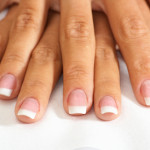
So far in our series on harmful cosmetic ingredients we have covered parabens. This week we are talking phthalates.
What are phthalates?
Phthalates are plasticizers used in everything from children’s toys to cosmetics. When used in toys and other vinyl plastics these chemicals add flexibility and durability. Phthalates are used in cosmetics and other household items (laundry detergent, cleaning products, air fresheners) to hold scent and color.
Why avoid phthalates?
Research has found phthalates to be hormone disruptors which can negatively affect fetal development, and are linked to asthma, skin irritation, and allergies. They are also associated with infertility and are considered a probable carcinogen by the World Health Organization. Recent studies have also found phthalates to have a possible link to ADHD.
The European Union has banned the use of phthalates in personal care products.
Which products contain phthalates?
Phthalates are commonly found in nail polish, perfume, lotion, soap, facial cleanser, hair care, baby care, make up, and hair spray. To locate phthalates on cosmetic product labels look for; Benzylbutyl phthalate (BzBP), Di-n-butyl phthalate or Dibutyl phthalate (DBP), Diethyl phthalate (DEP), fragrance, perfume, and parfum.
How to avoid phthalates in cosmetics
In cosmetics phthalates are commonly used as fragrance. If you see the term “fragrance”, “perfume” or “parfum” on a product label it should raise a red flag. I recently saw an air freshener commercial touting their product as “Made with 100% fragrance”. This does not mean it is made with naturally-sourced fragrance and is most likely synthetic fragrance, so this claim means absolutely nothing beneficial.
But not all fragrance is bad for you. Makers of safe, nontoxic cosmetics use natural essential oils to scent their products. The term “fragrance” is often used on safe products scented with essential oil combinations to guard against the company’s trade secret formulation. Safe cosmetics manufacturers will note on the product label that the fragrance is an essential oil blend, even if they do not list exactly which oils were used.
A FDA trade secret loophole makes it possible for manufacturers of chemical beauty products to hide their use of phthalates under the term “fragrance”, not disclosing on the label that the product contains these toxic chemicals.
This may make you think that going with unscented where available would solve the phthalate issue, right? Wrong. Often “Unscented” products contain another chemical to mask the smell of the chemical fragrance used.
To be sure your cosmetics are phthalate free check for the terms above on product labels. And if you see “fragrance” on the label look for a footnote explaining what type of fragrance was used (essential oil). If you see none, put it back on the shelf.
If you have any questions on phthalates, or any other cosmetic ingredient, please leave a comment below.
Image: Wikipedia


One Comment